Trekking in Himalayas is an addictive experience. But, all first-time trekkers about to embark on their maiden journey are combating nerves while controlling the euphoric anticipation of the Great Big Adventure! This feeling of the heart pumping right before the beginning of the trip is hard, if not impossible, to replicate.
While the motivations of trekking usually include testing ones’ physical strengths and endurance limits, the experience in itself is so much more. Of course, the emotional, mental, and physical strength you gain is indescribable.
But, what will baffle you as a first-time trekker (and in all the subsequent treks you’ll surely embark upon) is the evolution of your perspective. So tie your shoes, young guns, and let’s prepare to tackle the literal mountain!
Let's quickly dive into the details:
About: Trekking in the Himalayas
To truly enjoy the beauty and mystique of the Himalayas, the best way to explore the hills through treks and hikes. It is a genuinely soul-satisfying experience, especially if you live a life in concrete jungles. When you stop the clock and embrace the pace of nature, enthrall yourself by the beauty of these mountains.

Download your FREE high-resolution version pdf copy of this infographic guide about important tips on how to prepare for your first trek in the Himalayas. If, you liked it and found it helpful, please feel free to share it with your family and friends to help them too.
Himalayan treks are often a symbol of isolation, unbelievable beauty, and pristine nature. There is no shortage of treks in the Himalayan range, and you’ll be spoilt for choices when deciding upon your first venture.
Beginner Word of Advice for Himalayan Trekking
Undoubtedly, wanting to explore the aura and the paths not taken, is an adrenaline-pumping experience, especially the first time around. However, it is advisable, nay, imperative, that you plan and prepare for what’s to come. As the legend goes, it’s better to be safe than sorry.
The Mighty Himalayas can be unforgiving if messed around with – so always respect the mammoth! As is the case with extreme isolation, you often have only yourself and your group to rely on, and presence of mind will be your biggest protector. Hiking is more of a mental challenge than a physical one, and your mind is the most significant player in the game!
Often, not being prepared might lead to trouble in the hills. Here, we will delve deep into what to know if you’re a beginner trekker. Learn to train, and you’ll come out with an experience of a lifetime.
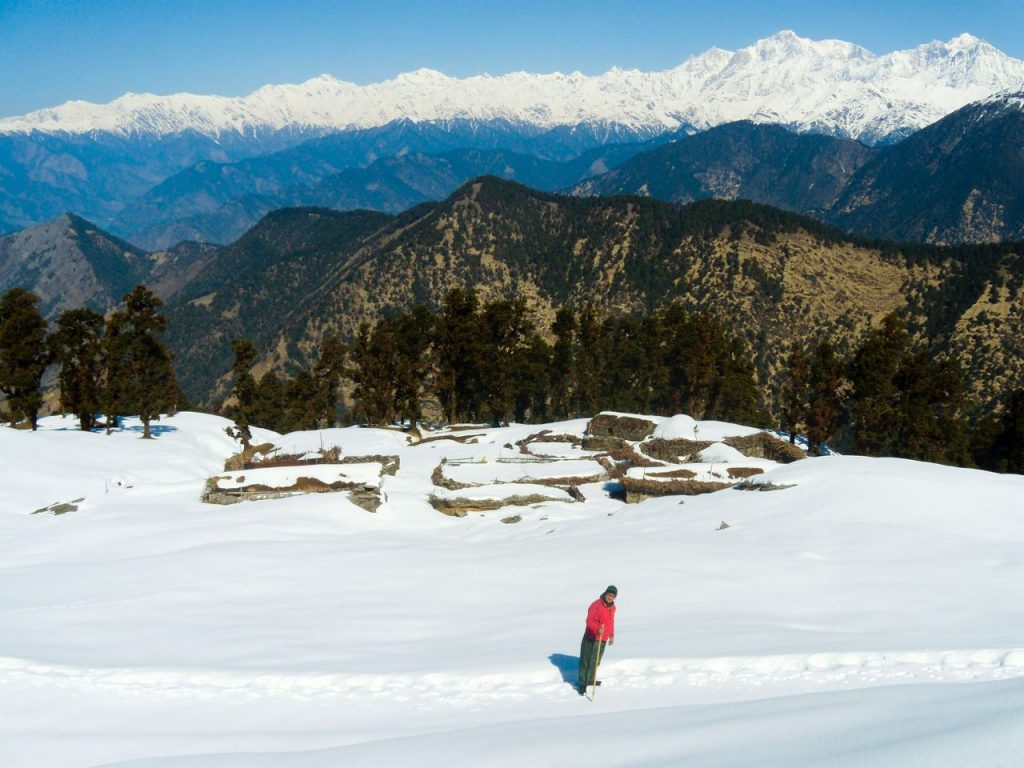
Have you gone a trek before? See the tips below to learn something new. Also, leave comments on your handy tricks and how to ensure maximum fun and safety during a trek!
Preparation for the Trek – Pre Trekking
So, you’ve decided that you are embarking upon your first trek. Now what? Planning a trek for the first time might seem like a daunting task. But, if you follow a step by step plan, it will be a cakewalk (unlike the trek itself).
Choosing a Place
This place is where the real game begins. Whatever your motivation for choosing a trek, not being too ambitious and enthusiastic about your abilities is essential, choose a beginner level trek for which you are fit and also fits in within your timelines. A trek might be easy if covered in 5 days; as an example, however, the same trek can be back-breaking if tried in 3 days.
Many people choose a much harder trek as a beginner, which they regret while doing it. Doing this will only hinder you from enjoying the experience truly. As with all things in life, build your resilience while trekking.
An easier trek that you enjoy might make you a return customer. However, a problematic trek outside your current capabilities will only leave you with painful memories!
There are great treks around Himachal Pradesh and Uttrakhand for beginners. If you aren’t able to choose your first trek, then check out our article on the best beginner treks.
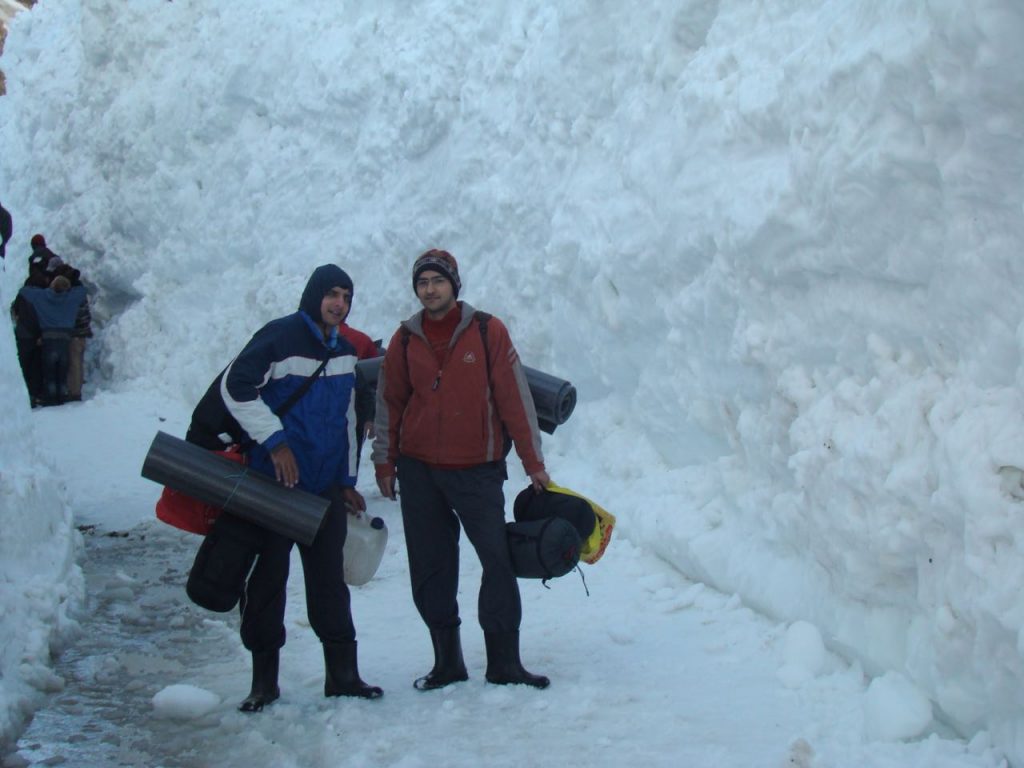
Do your research on the trek
Research is critical when you are planning a trek. Reading the right articles over the Internet and books about the trek will help you prepare well for your trek.
Never rely on someone’s advice without properly knowing his/her background and how experienced they are in trekking in the Himalayas. It is a big mistake in building some half baked information shot in the video on YouTube or Instagram.
If you are trekking in Himachal Pradesh, you can always get in touch with Tarun Bhai and read his blog. One of my favorite blogs is his article on a curious case of avoidable mistakes and deaths.
Choosing a Guide
No matter if the trail is simple and or the path is built, you need experienced guides in the mountains who can save you in case of an emergency. After doing a few treks, some people consider themselves professionals and avoid guides.
But, you never know when you might get lost in those big mountains, or you are affected by AMS, or any injury occurs. These are the harsh situation in which a guide will be your best friend and literal savior.
Keep Buffer Days
While making the itinerary, ensure you keep a buffer of a couple of days. Things don’t move to your plan. Nature’s plan will always take precedence. It always makes me question my need to plan, but what to do! Adverse weather conditions, getting hit by a bad case of AMS, not being able to meet your daily targets are all real challenges. Thus, a couple of days extra should always be added in.
Choose your travel buddies aptly
As a first-time trekker, you’ll best enjoy your rendezvous with the hills in a group setting. Going in groups will ensure having a helping hand, along with the added advantage of companionship. As a first-timer, this is especially important and will make your journey more enjoyable.
Having solace all around, you will not be disturbed by your gang, who will most likely be zen-ed out as you would be! Also, once the trip ends, you’ll have someone who understands what you mean when reminiscing about your venture – a MUST!
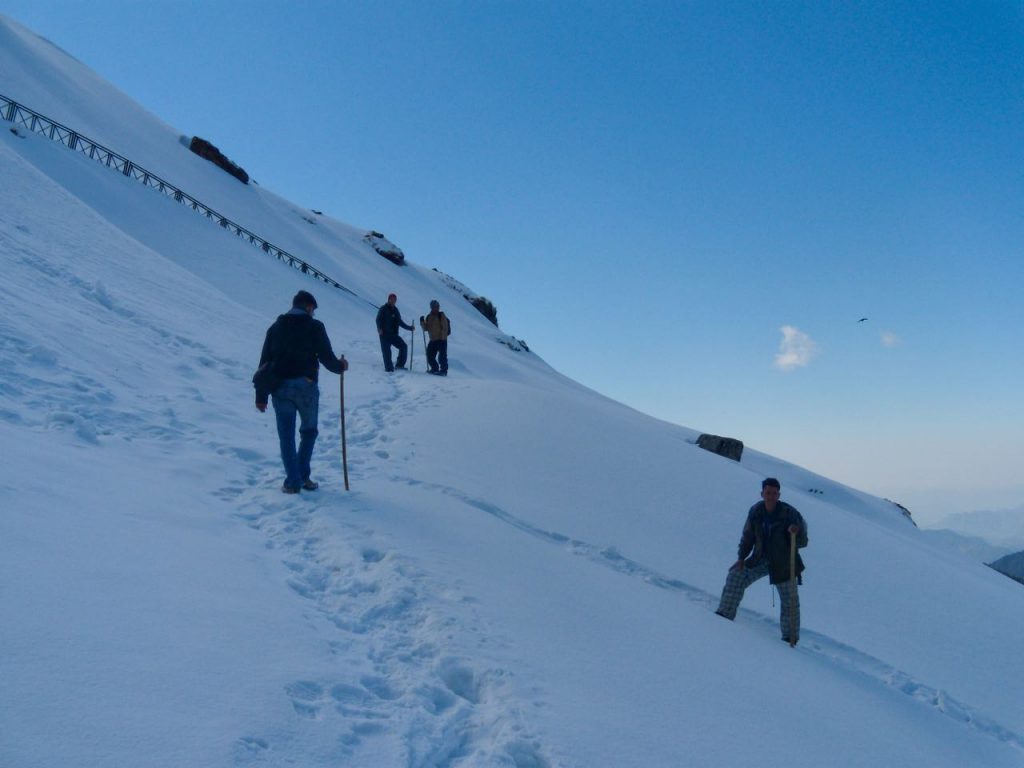
Physical Training
Many people don’t take trekking seriously and go unprepared. I’ve seen many people giving up just before the summit, and that’s the worst thing that can happen to a trekker.
So be confident and start preparing before 10-15 days for the trek. Do basic exercises daily, which will increase your stamina.
Train your legs with exercises like squats, lunges, and running. Cardio is also a critical gradient, as you’ll be climbing, moving, walking, and occasionally for the majority of your day. Ensure your form is excellent, especially for your back and core. You’ll be carrying a lot of things and need to build your endurance for the same.
What are some challenges you think you’ll face in the physical training pre-trekking? Comment below, and we can provide a targeted preparation guide as well!
Mental Preparation
While physical training is essential, hiking is more of a mental challenge than a physical one. Know that you will be tired, sore, and in pain at various points during the trek. Also, know that this is part of the fun. Don’t give up – and will yourself to move forward.
Also, being prepared helps in minimizing stress, and knowing that you have people to fall back on makes certain conditions relatively easier. A great trick that I always use is to visualize yourself there when embarking on tough journeys.
If you are interested, then you can also check this detailed guide on planning the trek to Gaumukh.
Think of how inconsequential that muscle pull would be to finale reaching your destination and having that badge of honor of completing the task you took on! Another vital thing to remember is the necessary living conditions with limited necessities available.
While this might seem like a given, someone who is going trekking the first time should understand that living in a tent can take some getting used to. Don’t let it stress you out and just take it in stride and enjoy the experience.
Pack appropriately for trekking
Packing should be one of the top priorities for you while you plan your trek. Thanks to a little early-bird preparation, you will not be too tired and enjoy the trek to the fullest.
The only mantra to follow when packing is to not overload your rucksack with unnecessary items, which will make your backpack heavier. Just take one extra pair of clothes in case of rain or any other emergency. Pack jackets accordingly by researching about the temperature of the trek.
Trekking Shoes
The Majority of folks make the mistake of wearing sports shoes while trekking, assuming it won’t make much difference. But, this is a grave error! Trekking shoes will provide you with thorough support and comfort in the rough terrain of trekking and can also protect your feet enough in low temperatures and rain. It is essential to wear comfortable hard-soled trekking in the hills.
Also, and this is mandatory – don’t buy brand new shoes and wear them for the first time on the trek. While purchasing the trekking shoes, ensure you’re wearing thick socks – that way, you’ll be able to provide the fit is just right.

What kind of shoes to purchase
The shoes must fit you snugly, even with the socks on. Also, try to break-in the shoes by wearing them a few times before the trek. Otherwise, you might be in for a terrible surprise in the way of shoe bites (they tend to hurt so much more in the cold weather, making your trek sometimes unbearable).
Best trekking shoes are the ones that keep your ankles stable. For river crossings, water shoes or hiking sandals are right, one can remove socks and just wear boots too, but in cold weather, it might be a terrible idea. Forclaz is a preferable option in the budget range for beginner trekkers.
Layers of clothes
The days are long, the nights are cold, and the weather changes at a moment’s notice. Ensure you’re wearing comfortable clothes that are easily removable if need be. Trekking pants are a must, given the freedom of movement and flexibility it allows.
Also, avoid packing cotton clothes as they don’t dry quickly and do not provide any warmth in the rain/cold. Wool & Fleece are great options. Avoid cotton socks as well. Thick synthetic or woolen socks will help prevent blisters when wet or sweaty. Wear a cap/hat to protect from the sun and keep you warm in the cold.
Trekking poles
Trekking pole acts as your third leg and provides constant support to you. It is one of the most useful equipment and quickly also the most ignored tool by beginners.
You can save up almost 40% of your energy only by using a trekking pole. It provides you with that extra balance and stability, which you will need in rough terrain. It does more than half of your work while descending. I think these are enough reasons to use one for a trek.
Basic medicines
A simple medical kit is essential when you never know the weather in the mountains. As the saying goes, always hope for the best, but prepare for the worst. It is better to have a few pills/ ointments handy and not use them than not have them and be in dire need! Carry essential medicines with you, which you can take in an emergency.
Carry precautionary medicines for Acute Mountain Sickness, which will help you in acclimatizing on the trek. Also, goes without saying, drink enough water while trekking which will help you acclimatize.
Make sure to check this comprehensive list of things to carry for any trip.
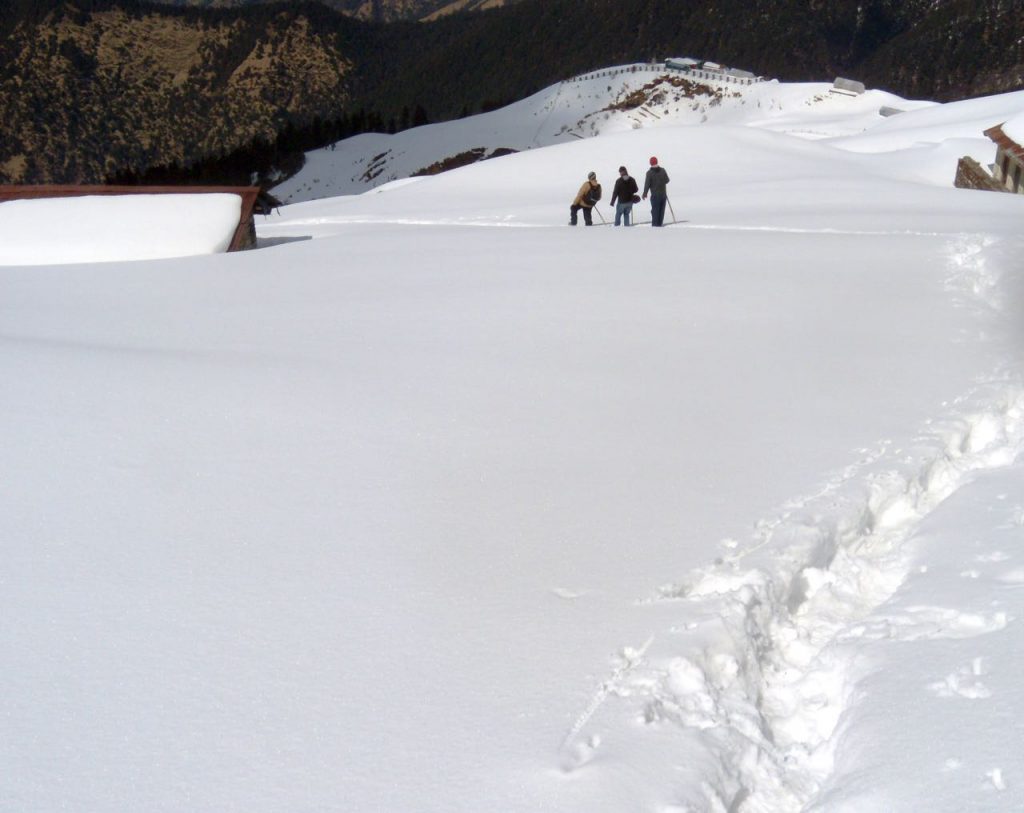
Miscellaneous
A pocket knife, flashlights with extra batteries, waterproof matches/lighter, some navigation tools (especially if you’re heading deep into the woods), biodegradable toilet paper! Lastly, don’t forget to carry the necessary permits and ID cards and some cash.
Sunscreen
Since you’ll be exposed to a long period of sunlight, having a UV protection comes in handy.
Water bottle
Carry a water bottle and fill it up with clean sources of water whenever possible. A great tip would be to fill up your bottle with hot water, if feasible – this can also act as an excellent heating bottle in the freezing temperatures at night. Necessity is the mother of invention, am I right?
Inform your family of your itinerary
Inform your family/ friends of your itinerary before you head out and ensure they’re aware of a lack of connectivity. It is natural for the loved ones to worry when you’re not around and are not reachable, so ensure that you make them feel comfortable about your adventures.
It is one thing to be an adventurous soul, but you shouldn’t unnecessarily trouble your loved ones. They’ll worry regardless, but the least you could do is ease their tensions a bit!

During the Trek
The day is finally here! You’re all set with your pals by your side to take on the Mighty Himalayas (or any other trek you’re attempting to ‘conquer’). What now? Well, first and foremost, take it easy and ease into things!
Don’t overdo or over-exert. It’s only the first day, and you have a long journey ahead of you. Absorb what’s happening around you and get ready for your adventure ahead.
Some do’s and don’ts while on the trek are always handy to have. First, always, always, always help your fellow trekkers. Whether it is providing a word of encouragement to buck up their confidence, or lending out spare socks you might be carrying, it is necessary to cohabitate.
Of course, wouldn’t you want the same to be done for you as well? Be a friendly chap, and take everyone along. Also, when you’re feeling weak, be sure to communicate so that others are ready to jump into action if need be!
Also, let’s not pollute these beautiful mountains and lakes where we go to explore! Carry a garbage bag with you and fill it up with all your waste. Bring it back to be disposed of properly. Do remember that you’re out in the wilderness; there won’t be a clean-up drive every week. Ensure you leave the mountains as pristine as you saw them.
It is our civic and natural duty to keep the mountains clean. Little steps will take you a long way in preserving the ecosystem. For example, don’t purchase water bottles, just fill up the one you’re carrying. Water in the Himalayas is pretty clean, given that you’ll probably be near the source itself when trekking.
Listen to your body while trekking
It is one thing to know when to push if lethargy is kicking in and another to understand that pushing too hard might lead to severe injuries. Learn to hear what your body is telling you and adjust your pace accordingly. There is no harm in taking it slow – just communicate with your group and guide and keep them informed.
Acclimatize
Acclimatization is the most important rule to follow. With treks, guides usually keep up on ensuring you’re acclimatized enough before moving to higher altitudes. But, it is still wise to take Diamox before going up on a steep height.
Miscellaneous
- Other things to be careful of includes not disturbing the natural wildlife of the region. So, ensure your music isn’t too loud. Other things that are good to know include not touching suspicious-looking flora as poisonous plants make for a pretty significant hiking hazard.
- Do not use strongly scented products as it ignites olfactory senses in the wildlife. And most importantly, keep alert and know your surroundings.
- Respecting fellow trekkers by leaving markers alone is an unsaid rule. Think of protocol, relish the experience, take tonnes of pictures, and stop and soak in the views!
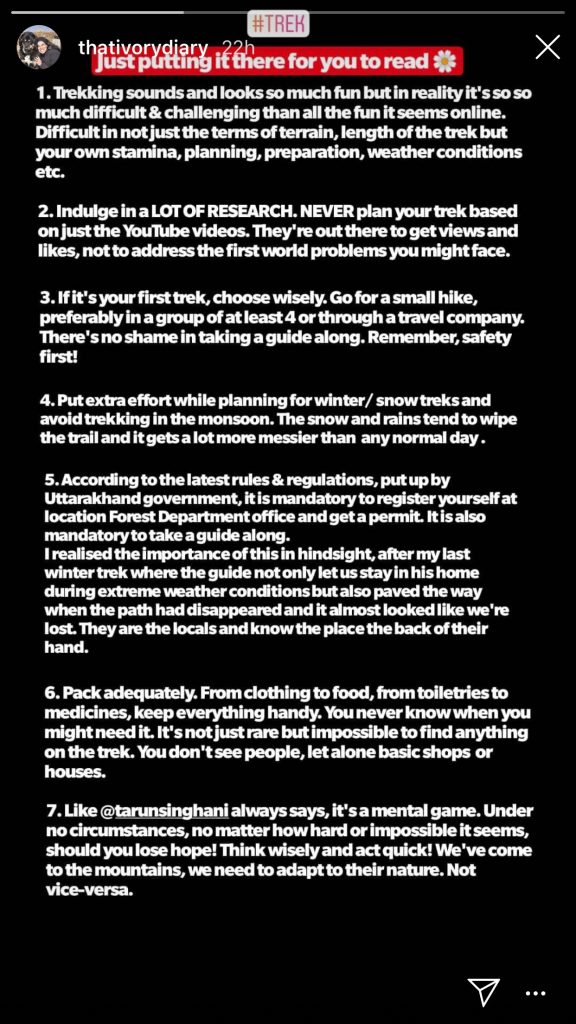
Post Trek
YAY! We made it back. After immersing in nature, we are back to reality. You will be stoked by all that you saw. Now, believe me, when I say this, the real journey begins – when everything you saw starts sinking in, and you start deciphering the beauty of the Himalayas.
Rest
Do make sure to rest your tired body. Even though you’ll be running on euphoria, it is mandatory just to relax and unwind. Sleep it off, you wizened soul!
Take a look at the pictures
In the moment, you almost became a part of your surroundings – go through the millions of pictures your gang took to enjoy and reminisce!
Plan your next adventure
Now comes the fun part. Every life-defining trip that comes along makes you crave for more. The journey will end with you wanting another expedition out in the wild. Most offbeat travel enthusiasts enjoy the seclusion and the peace they derive from the challenging yet soothing natural environment.
With this, I welcome you to the community of nature lovers, the ones who understand what it is like to be out of the hum-drum of daily life and truly live out there.

Download your FREE high-resolution version pdf copy of this list of things to pack for a trip infographic guide. If, you liked it and found it helpful, please feel free to share it with your family and friends to help them too.
Conclusion
Trying to ensure a 100% smooth trip is not what a trek is about. Trekking makes you uncomfortable and puts you out of your comfort zone. While planning is essential, it is not to zero-out the chance encounters, for there is no fool-proof of nature.
Have a travel question?? You can subscribe to my YouTube channel and leave a comment to ask your travel questions on traveling to the Himalayas.
So while the above tips might help you minimize common problems, it is always important to take things lightly and move on to the next moment as smoothly as you can. Take things in stride and be open to handling stuff you might otherwise not face!
I hope these tips will help you in your trek. If you have any questions or doubts regarding planning your first trek in the Himalayas, then please ask them in the comments below.


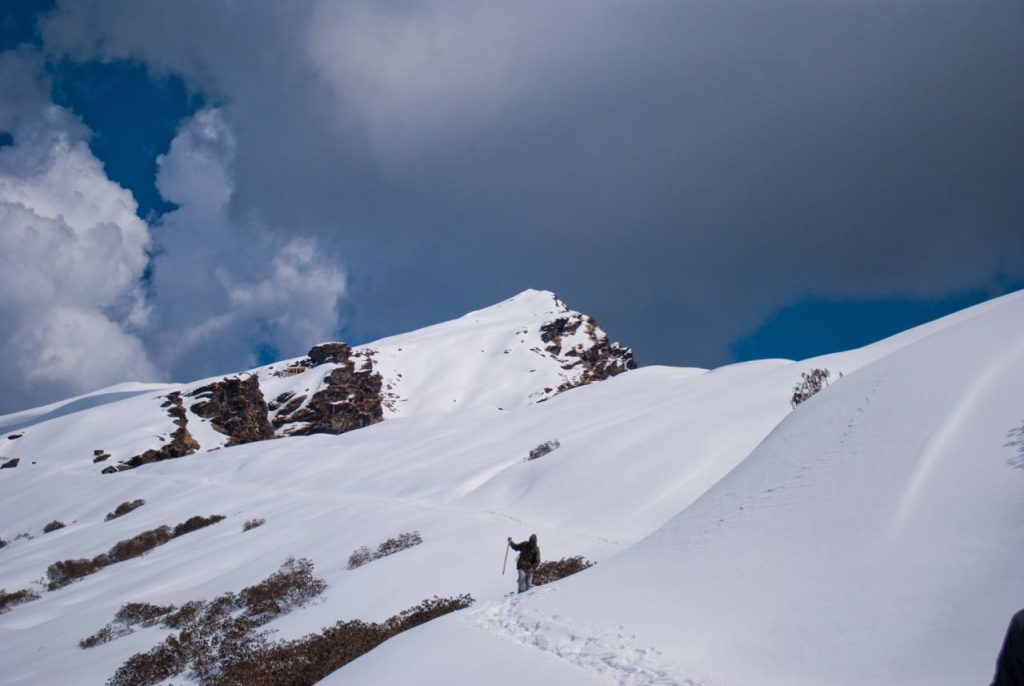




1 Comment
Comments section gets closed in 90 days. To ask your travel questions, you can follow my YouTube Channel for a faster reply or for a much slower reply follow me on Instagram. :)
Very entertaining information for tracking